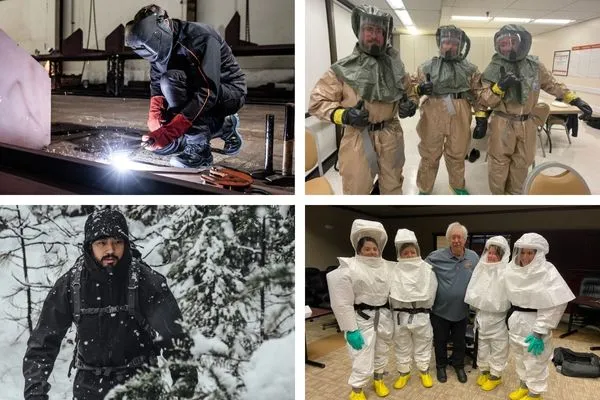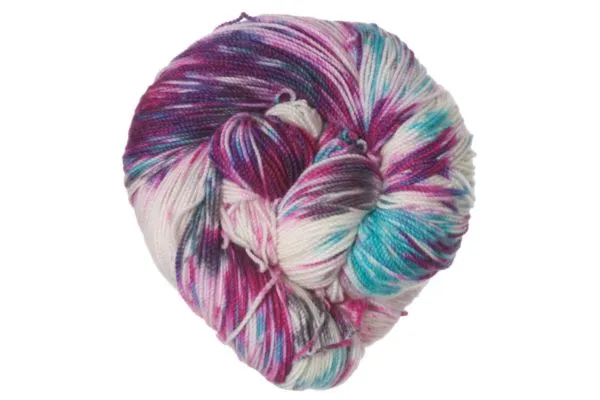Table of Contents
Basic Functions of Clothing
Together with food and shelter, clothing is one of the three basic needs of humans. It fulfills many requirements, but mainly three are: –
- Protection
- Decoration
- Identification
- To be civilized
- To feel comfort
What is Special Apparel?
The garments which have special characteristic features are called special garments. In other words, the garments used for the protection of the human body and life from different adverse conditions or during working at any risky environment are called protective clothing or special garments.

In today’s environment, protective clothing is required to conduct dangerous work, particularly in hazardous environments because it is the employer’s responsibility to protect their employees from any detrimental effects when working in a hazardous workplace A worker working in the chemical industry, for example, may be harmed by the chemicals that are handled daily Chemical resistant clothing was used to shield that person from the effects of chemicals Protective clothing of special clothes that are worn to safeguard the human body or life when working in hazardous environments.
Types of Functional Garments
Functional garments are classified into 4 groups, based on their areas of functionality:
- Protective clothing
- Sports-functional clothing
- Medical-functional clothing
- Clothing for special needs
1. Protective Clothing
This includes functional garments that can provide the wearer protection from one or more dangers. These can cover protection against mechanical impact, physical injury (cuts, bites, perforation, and abrasion), drowning, heat/fire, extreme cold, rain, electric shock, radiation, invisibility and dangerous substances, and infective agents.

2. Sports-functional Clothing
Functional apparels in this section are used to make better the functionality of sportspersons by providing a high level of breathability, moisture/vapor transfer, heat insulation, wind-proofing, water-proofing, and/or UV protection relying upon the sport and environment requirements.
3. Medical-functional Clothing
This section includes functionalities like absorbency, air permeability, and durability based on the wearer and needs. It contains functional garments used for healthcare or hygiene, surgical clothing, therapeutic clothing, and intelligent functional attire.
4. Clothing for Special Needs
These functional garments are used to enhance the quality or ease of life for people with disabilities or special needs, like wheelchair users, paraplegics, arthritis sufferers, people with restricted movement, or stroke victims. These garments are mostly made-to-measure to ensure individual needs fullness and comfort for the wearer.
Apart from the above-mentioned classifications, Vanity-Functional Clothing like body shaping, contouring, and support apparel to enhance the wearer’s appearance, and Cross-Functional Assemblies offering multifunctional performance, life support, protection, communication, and comfort also belong to the functional apparel section of technical textiles.
Examples of Some Special Apparel
- Heat and flame-resistant clothing Chemical Resistant clothing Protective clothing for radiant heat Fire fighters clothing
- Armed forces clothing
- Protective clothing for space shuttle Clothing for coal miners
- Swimming clothing.
- Driving clothing.
- Racing clothing.
- Fashion Apparel, etc.
Functions of Special Apparel
- To protect the employees’ body and life from the risky environment.
- To protect the human body from the harmful effects of heat, flame, and radiation.
- To perform risky work.
- It ensures proper working conditions in risky operations.
- It is resistant to heat and flame.
- To reduce significant levels of discomfort.
Fibers used in Special Apparel
A. Synthetic fibers with high mechanical performance:
High strength and high modulus make defensive clothing capable of sustaining high velocity and retaining its shape during and after impact.
Example: KEVLAR & TWARON Which have excellent thermal resistance and do not melt or burn easily.

ULTRA HIGH MOLECULAR WEIGHT POLYETHYLENE (UHMWPE) high modulus and 15 times stronger than steel twice as aramids.
ZYLON has high heat resistance and good mechanical properties.
Combustion-resistant Organic Fibers
The limited oxygen index (LOI) is the measure for resistance of the fiber to combustion.
NOMEX & CONEX were produced from meta aramids that have low LOI.
POLY BENIMIDAZOLE (PBI) has big LOI of 42
Recently PAN-OX is of LOI 55 by RK Textiles. These are thermal-resistant protective clothing without any chemical finishes.
High-performance Inorganic Fibers
CARBON fiber has high mechanical properties, electrical conductivity, and high thermal resistance it is used for reinforcing fibers in composites & also for electromagnetic and electrostatic protection.
ALUMINO SILICATE compound mixtures of aluminum oxide and silicon oxide can withstand up to 1250 and 1400 Degrees. SILICON CARBIDE
(SIC) has an outstanding ability to function in an oxidizing condition up to 1800 Degrees.
Novel Fibers
These are fibers that exhibit silk-like properties in additionally enhanced with durability. These are microfibers with deniers similar to silk. Nowadays thinner fibers have been successfully made and tight weave with 30000 filament/cm2

This makes it impermeable to water droplets and allows air & moisture circulation. These are used in waterproof materials and outdoor protective clothing.
Aramid fibers
- p-aramid fiber provides high strength and ballistics.
- m-aramid fiber to provide flame and heat resistance.
Application
- Ballistic protection in armor vests and helmets.
- Cut via protection in safety gloves, aprons, work wear, and shoes for high-risk jobs
- High-temperature protection
Ultra-high tenacity polyethylene fibers (UHMWPE)
The Gel spun ultra high molecular weight polyethylene fibers with extremely high specific strength and modulus, high chemical resistance, and high abrasion resistance.
Application
In protective clothing applications, numerous impact helmets used by runners and mountain climbers also used for protection against cutting, sawing, and ballistics
Polyphenylene sulfide fibers (PPS)
Crystalline thermoplastic fiber with mechanical properties similar to regular polyester fiber. Excellent heat and chemical.
Polyetheretherketone fibres (PEEK)
Crystalline thermoplastic fiber with high resistance to heat and a wide range of chemicals.
Novoloid (Cured phenol aldehyde) fibers
High flame resistance, non-melting with high resistance to solvents, steam, chemicals, acid, and fuels. Good moisture regain and soft hand.
Polybenzimidazole fibres (PBI)
Moisture regains 15 percent, with high resistance to chemicals especially at elevated temperatures.
B. High-functional and high-performance fabrics
Microfibre-based light woven constructions:
The very first example within this group is the ventile fabrics made of 100 percent cotton, where a very large reduction in the inter-fibre pore sizes is achieved.
Breathable fabrics
• Laminated fabrics microfibrous membrane) One of the most significant developments in breathable waterproofing was the introduction of the GORE-TEX rainwear fabric in 1976 GORE-TEX is a microporous polymeric film made of polytetrafluoroethylene (The GORE-TEX film is supposed to contain micropores of size 0 2 microns at the rate of more than 1 3 billion/cm 2 and it provides a barrier to water, airborne particles, and bacteria.
• Coated fabrics (microporous coating) Polyurethane is one of the most extensively used polymers for coating apparel fabrics.
• Laminated fabrics (hydrophilic membrane) High-functional fabrics are engineered by combining with hydrophilic membranes Water vapor transmission through these membranes is achieved by the physical processes of adsorption, diffusion, and desorption.
Non-woven protective clothing
• Protective coveralls, suits, gowns, lab coats, and accessories are used in industry and organizations to protect workers from exposure to dangerous materials and to protect sensitive products from human contamination Nonwoven clothing is used for limited-use protective clothing and as components in reusable clothing Spun bonded olefins are the leading materials used and are often used in composites with barrier films
• Heat-bonded and calendared polyethylene spun bonded fabric Tyvek from DuPont is a great example of a very successful non-woven material for protective clothing.
Reference:
- R SHISHOO,- Introduction, Editor(s): R. Shishoo, In Woodhead Publishing Series in Textiles, Textiles in Sport, Woodhead Publishing, 2005, Pages 1-11, ISBN 9781855739222, https://doi.org/10.1533/9781845690885.1
- https://atira.in/protective-textiles-guide/
- https://latia.lt/?news=functional-textile-integrated-functions-for-better-performance&lang=en
- https://www.homesciencejournal.com/archives/2020/vol6issue2/PartE/6-2-21-378.pdf
- https://garmentspedia.blogspot.com/2017/01/special-garments-fabric.html
- https://medium.com/@stitchdiary/functional-garments-when-garments-do-more-than-fashion-262d1ca7ef9f
- https://www.linkedin.com/pulse/functional-garments-when-do-more-than-fashion-mausmi-ambastha/
- https://www.slideshare.net/slideshow/protective-textiles/17221741
Author:
Md. Shahjalal
Lecturer
Chittagong Textile Engineering College
